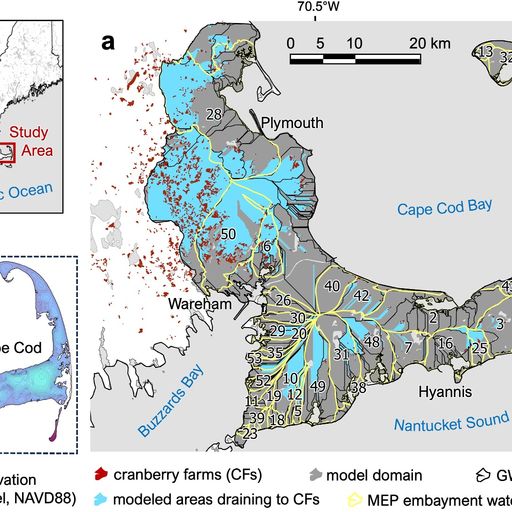Potential Nitrogen Removal by Restoring Wetlands on Retired Cranberry Bogs
This project seeks to better understand the sources and movement of nitrogen in wetlands. We are primarily interested in how much nitrogen is delivered to wetlands and how much nitrogen is potentially removed by ecological restoration of wetlands. We use a combination of field measurements and computer modeling to answer these questions.
Recent Updates
Modeling Nitrogen Load Reductions from Restoring Wetlands on Retired Cranberry Bogs
By
Adrian Wiegman
on September 26, 2025
(updated November 13, 2025)
I am please to share a new open access publication from our research team at US Department of Agriculture — Agricultural Research Service and Partners at Woodwell Climate Research Center and Buzzards Bay Coalition. The citation and access links and highlights are given below.
What are the water quality benefits of wetland restoration?
By
Casey Kennedy
on August 20, 2022
(updated October 4, 2022)
We answered this question using field measurements of nitrogen fluxes in groundwater and surface water at Tidmarsh. We found that Tidmarsh retained 28% of the nitrogen entering as surface water and groundwater. Although 28% nitrogen retention was low compared with natural wetlands, it will likely improve as vegetation and soils mature, which may increase residence times, enhance hydrologic connectivity, and facilitate favorable conditions for biogeochemical transformations the promote nitrogen retention.


